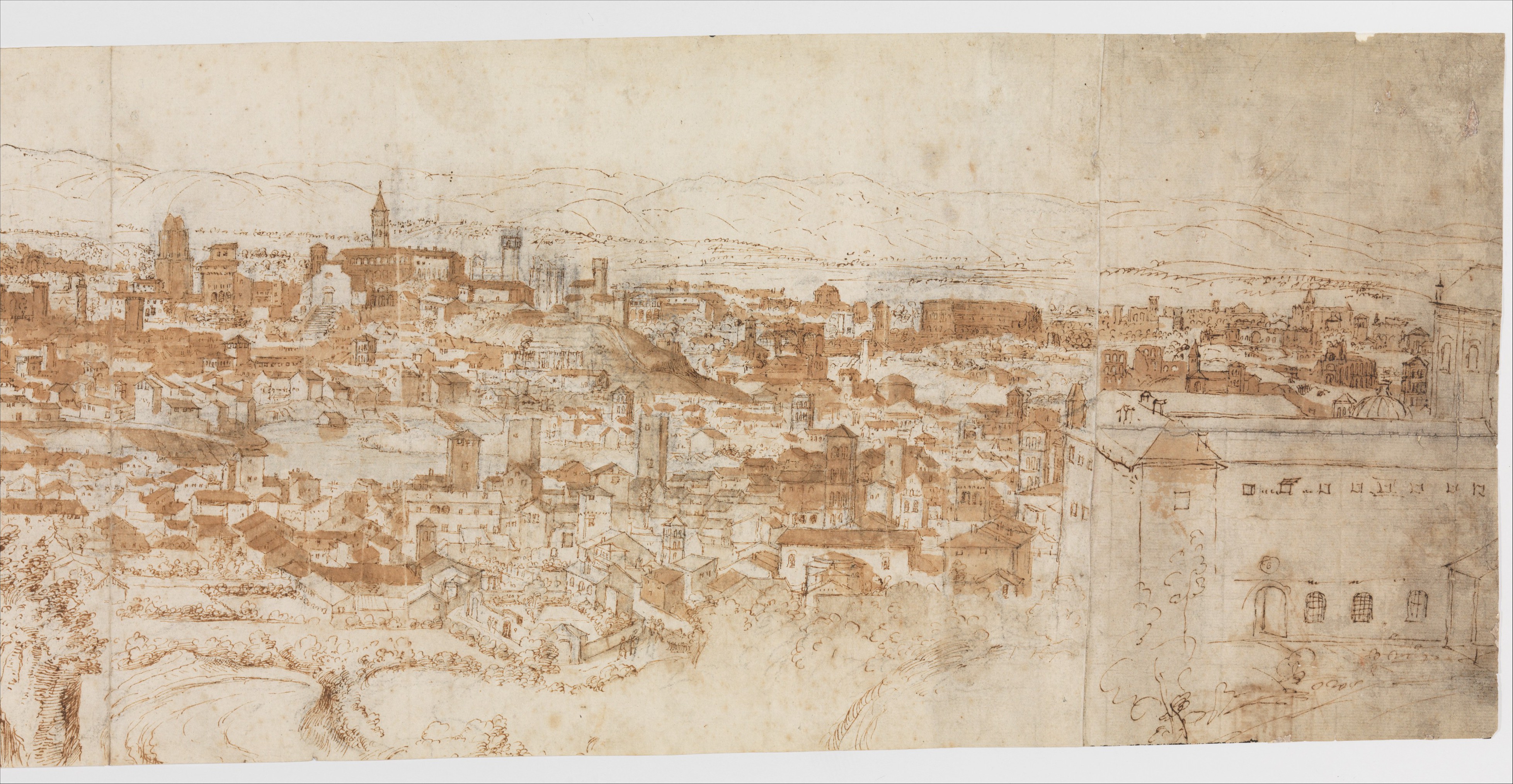View of Rome from the Janiculum in the South-West; verso: Sketch of buildings and plants
Anthonis van den Wijngaerde Netherlandish
Not on view
Made of three pieces of paper glued together, this exceptionally large drawing is among the most detailed early panoramas of Rome. The view is from the Janiculum Hill, in the western part of the city, on the site of the American Academy. Missing is Saint Peter's Basilica, just beyond the left boundary of the drawing, but other famous monuments can be recognized: the Castel Sant'Angelo, the Pantheon (whose rotunda is incorrectly punctuated by columns), the Colosseum, and, in the right foreground, the church of San Pietro in Montorio with its famous Tempietto by the fifteenth-century architect Bramante. In the center foreground is the Aurelian Wall, built in the third century A.D. Visible at center, on the opposite bank of the Tiber, is the Palazzo Farnese prior to its completion, making it plausible that the drawing dates from the 1540s. Although the view is a generally precise rendering of the city, it is unlikely that Van den Wijngaerde made it entirely on the spot. It is more probable that he made various perparatory sketches on the Janiculum and then worked out the vast panorama in the comfort of his lodgings.
This image cannot be enlarged, viewed at full screen, or downloaded.
This artwork is meant to be viewed from right to left. Scroll left to view more.










